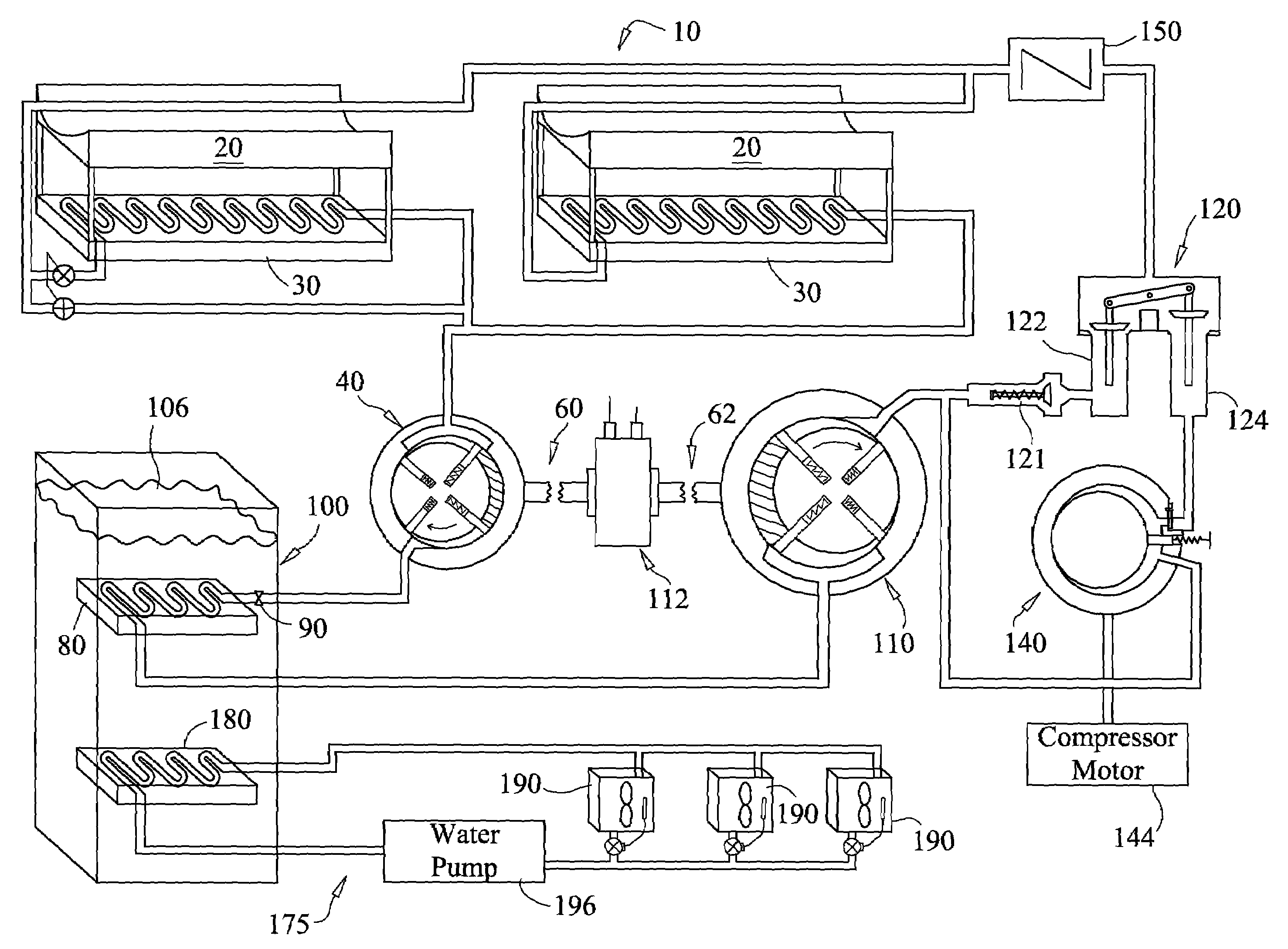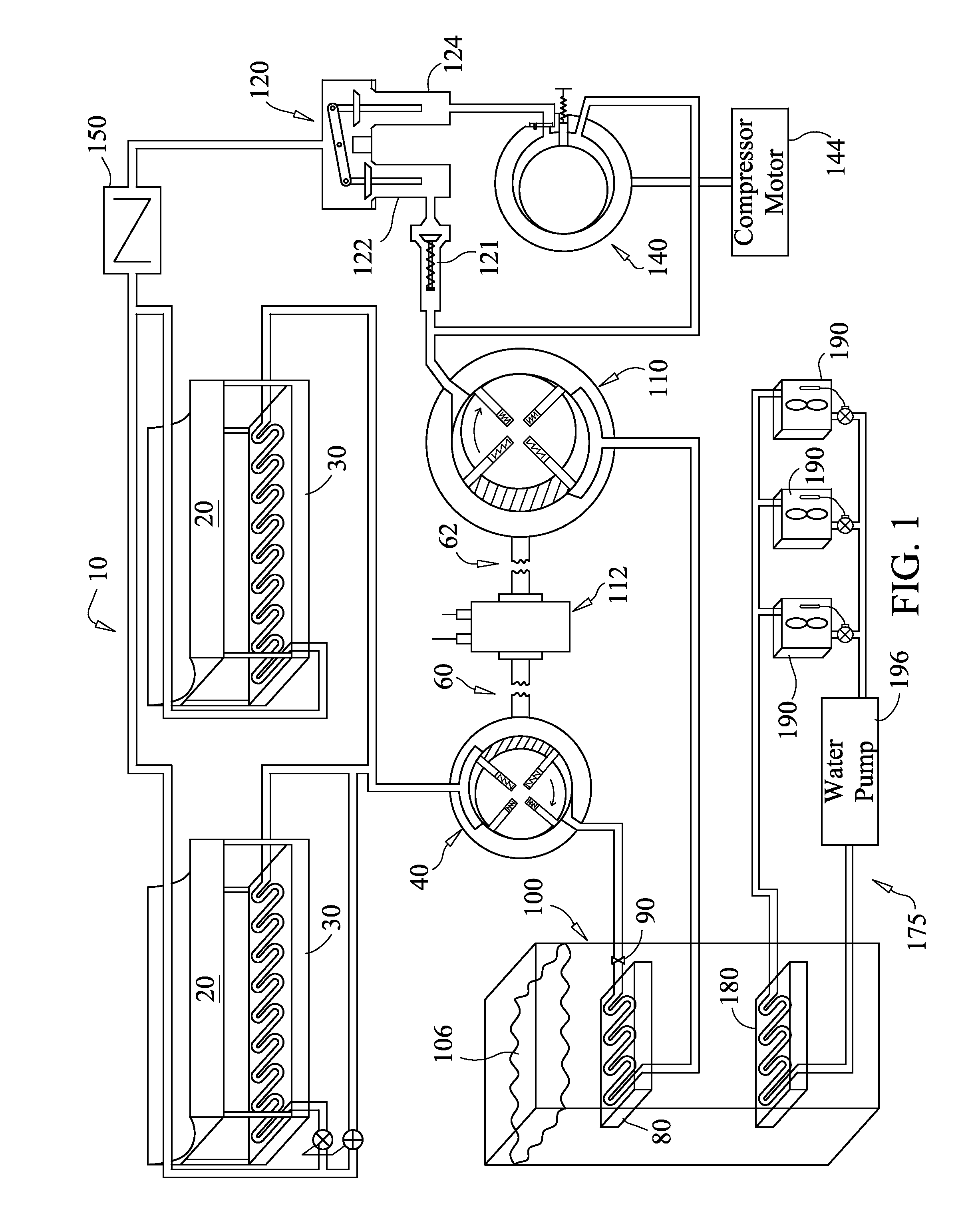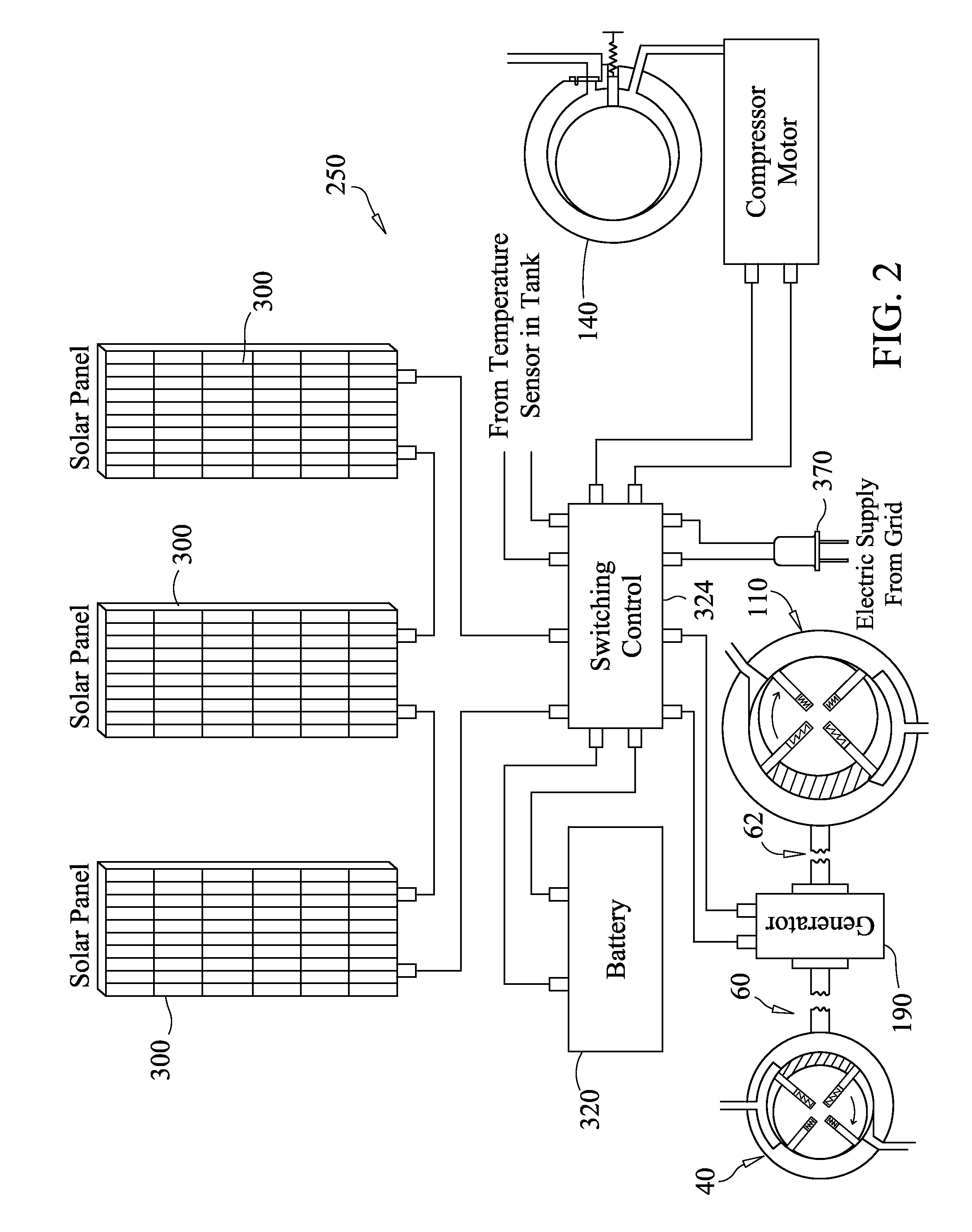Solar air conditioning system
a technology of solar energy and air conditioning system, which is applied in the field of solar energy air conditioning system, can solve the problems of inability to store foods and liquids requiring refrigeration, pollution to be released in the air, and inability to meet the needs of domestic cooling,
- Summary
- Abstract
- Description
- Claims
- Application Information
AI Technical Summary
Benefits of technology
Problems solved by technology
Method used
Image
Examples
Embodiment Construction
[0023]As seen best in FIG. 1 a solar air-conditioning system is illustrated and generally referenced as system 10. System 10 includes one or more solar concentrators 20 and preferably a plurality of concentrators 20 preferably arranged in a parallel configuration or communication with each other. Concentrator(s) 20 capture energy from the sun raising the temperature and pressure of the refrigerant within the pipe, tubing, plumbing, conduits, hoses, etc. (all collectively referred to as “pipe” or “piping”) at the focal point. Though not considered limiting, the refrigerant can be Freon or ammonia gas. All of the pipe, valves, components, etc. of the present invention are preferably connected to each other through conventional connectors, fasteners, etc.
[0024]The refrigerant within the pipe proceeds or otherwise travels to the one or more heat dissipaters, commonly known as condensers 30, which can be large area condensers. The number of condensers 30 can correspond to the number of c...
PUM
 Login to View More
Login to View More Abstract
Description
Claims
Application Information
 Login to View More
Login to View More - R&D
- Intellectual Property
- Life Sciences
- Materials
- Tech Scout
- Unparalleled Data Quality
- Higher Quality Content
- 60% Fewer Hallucinations
Browse by: Latest US Patents, China's latest patents, Technical Efficacy Thesaurus, Application Domain, Technology Topic, Popular Technical Reports.
© 2025 PatSnap. All rights reserved.Legal|Privacy policy|Modern Slavery Act Transparency Statement|Sitemap|About US| Contact US: help@patsnap.com



